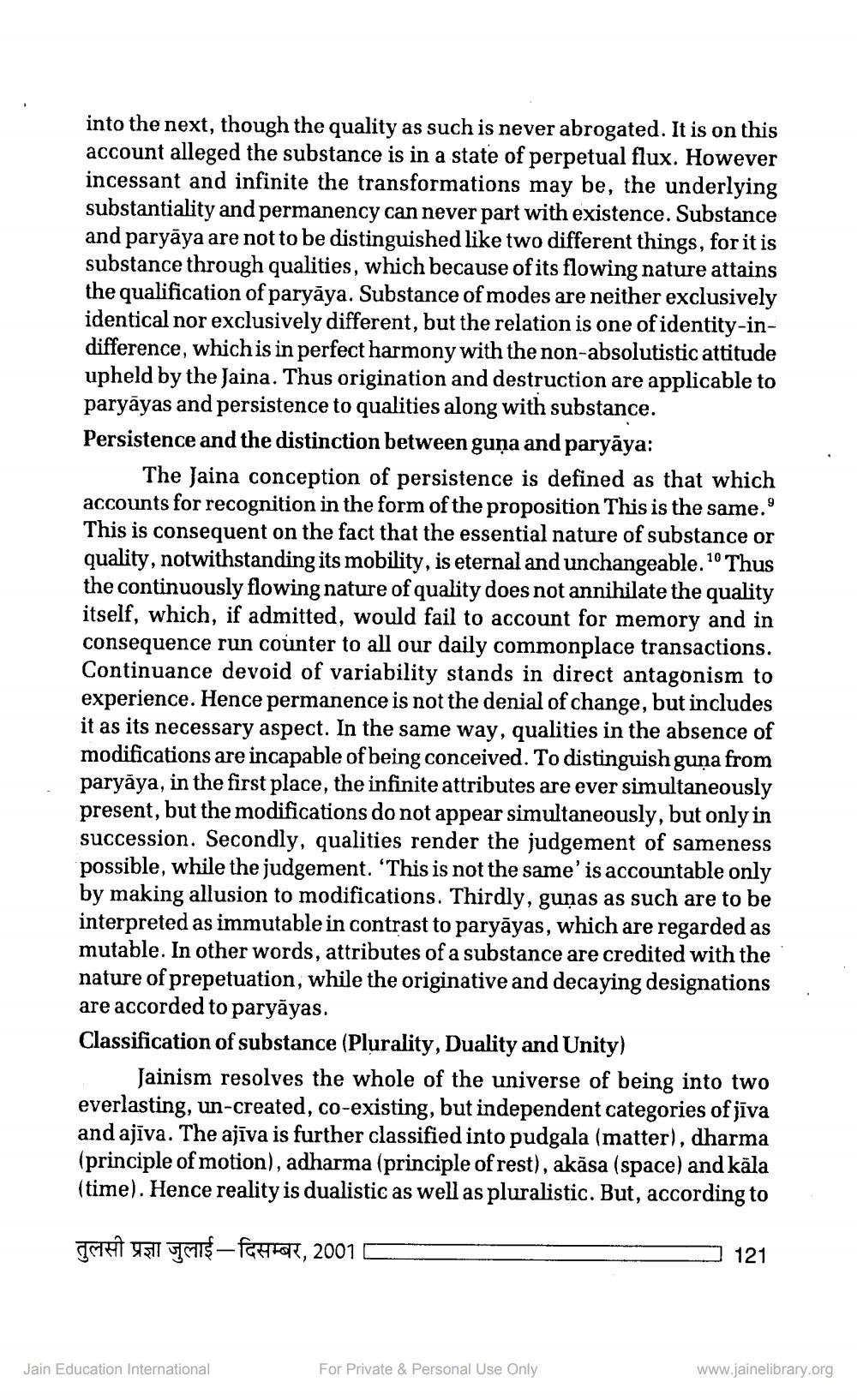________________
into the next, though the quality as such is never abrogated. It is on this account alleged the substance is in a state of perpetual flux. However incessant and infinite the transformations may be, the underlying substantiality and permanency can never part with existence. Substance and paryaya are not to be distinguished like two different things, for it is substance through qualities, which because of its flowing nature attains the qualification of paryaya. Substance of modes are neither exclusively identical nor exclusively different, but the relation is one of identity-indifference, which is in perfect harmony with the non-absolutistic attitude upheld by the Jaina. Thus origination and destruction are applicable to paryayas and persistence to qualities along with substance. Persistence and the distinction between guna and paryāya:
9
The Jaina conception of persistence is defined as that which accounts for recognition in the form of the proposition This is the same." This is consequent on the fact that the essential nature of substance or quality, notwithstanding its mobility, is eternal and unchangeable. 10 Thus the continuously flowing nature of quality does not annihilate the quality itself, which, if admitted, would fail to account for memory and in consequence run counter to all our daily commonplace transactions. Continuance devoid of variability stands in direct antagonism to experience. Hence permanence is not the denial of change, but includes it as its necessary aspect. In the same way, qualities in the absence of modifications are incapable of being conceived. To distinguish guna from paryaya, in the first place, the infinite attributes are ever simultaneously present, but the modifications do not appear simultaneously, but only in succession. Secondly, qualities render the judgement of sameness possible, while the judgement. "This is not the same' is accountable only by making allusion to modifications. Thirdly, gunas as such are to be interpreted as immutable in contrast to paryayas, which are regarded as mutable. In other words, attributes of a substance are credited with the nature of prepetuation, while the originative and decaying designations are accorded to paryayas.
Classification of substance (Plurality, Duality and Unity)
Jainism resolves the whole of the universe of being into two everlasting, un-created, co-existing, but independent categories of jīva and ajīva. The ajīva is further classified into pudgala (matter), dharma (principle of motion), adharma (principle of rest), akāsa (space) and käla (time). Hence reality is dualistic as well as pluralistic. But, according to
तुलसी प्रज्ञा जुलाई - दिसम्बर, 2001
Jain Education International
For Private & Personal Use Only
121
www.jainelibrary.org




